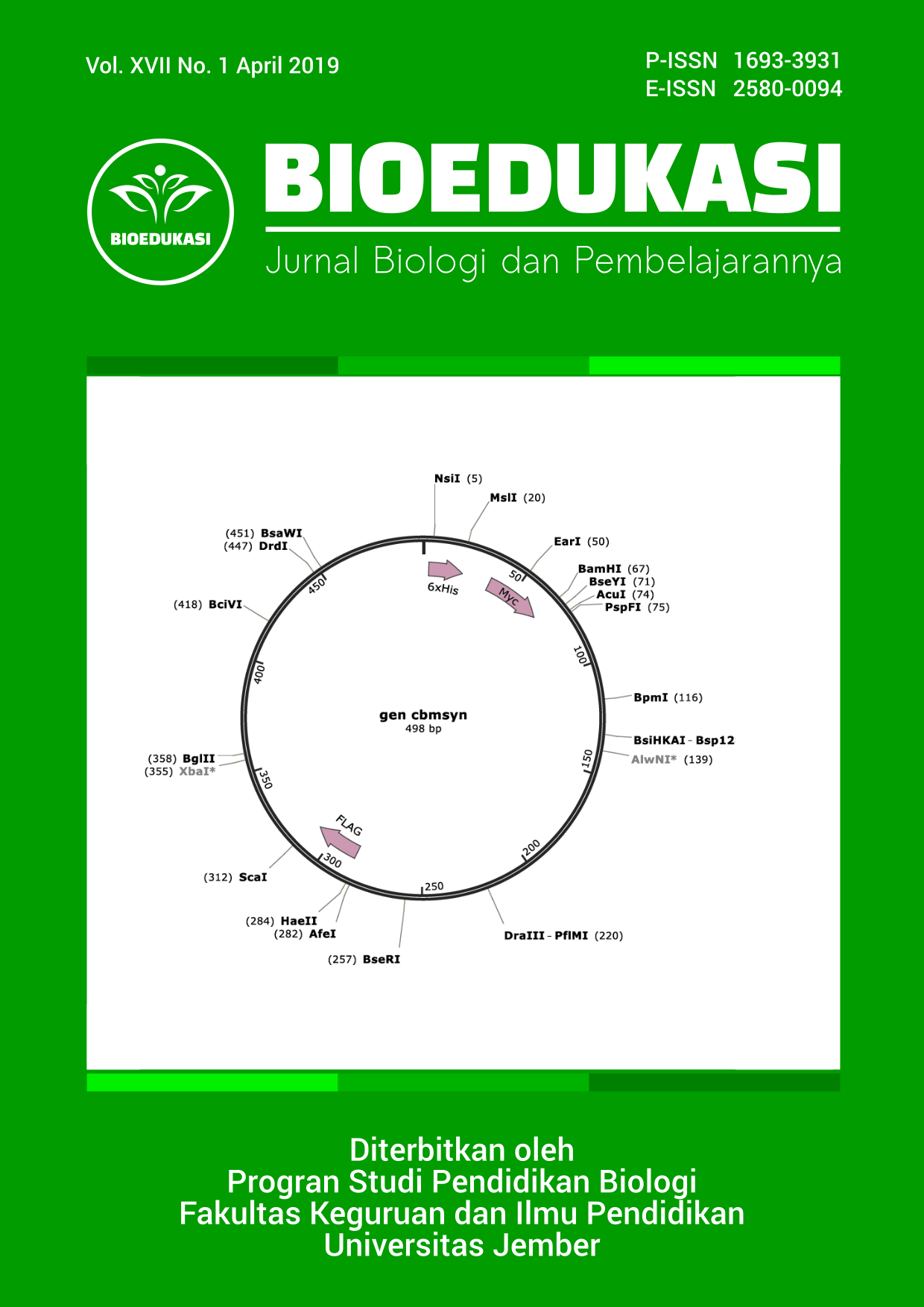Isolation and Antibacterial Activities of Actinomycetes from Rhizosphere Plant Cane (Saccharum officinarum) on Escherichia coli and Staphylococcus aureus
Abstract
The phenomenon of increasing human bacterial infections and increased resistance to antibiotics encourages the exploration of more antibiotic producers. One source of antibiotics comes from the Actinomycetes bacteria, the source of isolation comes from the rhizosphere of sugarcane plants because it is known in the rhizosphere to produce exudates that are beneficial to bacteria. The purpose of this study was to obtain Actinomycetes isolates and determine the antibacterial abilities of selected isolates. Initial isolation was carried out using Starch Casein Agar (ScA) media, then color grouping, Gram test and cell morphology observation. The next stage is testing the antibacterial activity carried out using the well method. Data obtained in the form of basic characters Actinomycetes, inhibition zone diameter and antibacterial activity count. The results showed that 4 isolates had antibacterial ability against test bacteria, among others, ACB34a isolates, ACB44c isolates, ACB44c isolates and ACB55c isolates. Based on the results of measurement and calculation of antibacterial activity against E. coli, it can be known in succession, among others, ACB44c isolates (9.62 mm2 / 10µl) and ACB54c (0.38 mm2 / 10µl), then antibacterial activity against S. aureus. among others, ACB44c (27.33 mm2 / 10µl), ACB54c (26.41 mm2 / 10µl), ACB55c (8.04 mm2 / 10µl), and ACB34a (8.04 mm2 / 10µl).
Keywords: Actinomycetes; Antibacterial; Characterization; Rizosphere of sugar cane

This work is licensed under a Creative Commons Attribution-NonCommercial-NoDerivatives 4.0 International License.









 https://orcid.org/0000-0003-1920-0515
https://orcid.org/0000-0003-1920-0515
